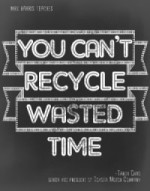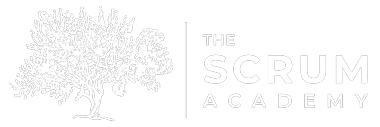
man in surprise looks at his watch in a white t-shirt. High quality photo
28 Ways to Stop Wasting Time (Part 1 of 2)

However, to get even greater levels of productivity, the kind of crazy 10X productivity that Jeff Sutherland regularly talks about, one needs to increase the Team’s focus. At Ron Quartel’s talk at the Phoenix Scrum Gathering, he emphasized the importance of the ScrumMaster to watch the office landscape like a hawk for any distractions and time wasting. These interruptions in focus come from the individual Team members, their work habits, how the Team members work with each other and from the business environment. In Peopleware, DeMarco and Lister spend a huge chunk of their book talking about distracting office environments and I believe the business is the greatest source of distractions on the Team members.
There are four areas where ScrumMasters can improve the Team’s focus: doing the work, defining the work, responding to emergent work and dealing with distractions. Here are some ideas you can try to increase the focus of the Team.
Doing the Work
- Work Sessions – Team members define periods of uninterrupted work. For instance, one Team might decide to have three work sessions a day: 9:30 AM to 11:30 AM, 12:30 PM to 2:00 PM and 3:00 PM to 5:30 PM. Once established, the ScrumMaster now has the job to train the business not to interrupt the Team while they are working.
- Introduce Short Breaks & Exercise – while this may seem to be a distraction, taking a five to ten minutes away from the computer and walking about is quite beneficial. The pomodoro technique from Extreme Programming is a good way to encourage the people to take short breaks during work sessions.
- Co-location – generally, when the entire Team is in the same location, focus goes up. However, we also need to be mindful that working in close proximity can introduce different types of distractions.
- Cleanliness & Tidiness – if the workspace is messy, disorganized and full of general clutter, it is distracting. As the Team’s servant, the ScrumMaster should work to create a sense of order and zen-like balance in the Team’s space by cleaning things up from time-to-time.
- Diet – give the Team members snacks and other food that encourages them to stay alert and not crash. Programmers definitely like cookies, sweets and pizza, but they will also eat pretty much anything you give them, so why not give them fruit, granola bars and nuts?
- Pair Programming & Mob Programming – when one person is working alone, they become a target for distraction or have tendency get lost in email, Facebook or simply surfing the web (which is not necessarily bad, but just waste time). When two (or more) people are in front of a computer working on a problem they are “clearing working” and not interrupted as much. Frankly, I am surprised that management does not insist on pair programming since it is the absolute best technique to kill time wasting in the office.
- Design Shoot Outs – ask the Team to solve the same problem in parallel for up to two hours and then share their results with the entire Team. This encourages set-based design, builds a healthy sense of competition and works best when you pair up developers and testers.
- Research Time – when people are “bored”, give them a spike to investigate. Researching a new tool, interface or idea tends to energize people and helps them re-focus their attention.
Defining the Work, aka Meetings
- No laptops – in addition to being extremely rude, computers in a meeting are extremely distracting. I cannot tell you how many times I have seen people answering email or doing something else.
- Meeting Acceptance Criteria & Meeting Definition of Done – basically a meeting needs to have a clear objective and purpose defined in advance of the meeting. If the meeting does not have one, define it at the beginning or simply leave.
- Stay on Topic – do not talk about anything not related to the meeting acceptance criteria or Definition of Done. In the ScrumMaster will not facilitate the meeting to stay on track, Team members have the authority to do so.
- Get Out Quick – every minute spent in a meeting is one less minute spent working on the product. If a meeting feels like it is over, take a quick vote to confirm it is done. The Decider\Resolution protocol works great in these situations.
- Law of Two Feet – the world of Open Space offers splendid guidance for meetings. If you are neither participating nor getting value from the conversation, use your two feet and go somewhere where you can. If the meeting is not working for you, just leave.
- Meeting Time – schedule no meetings during a Team’s work sessions. Do not schedule a meeting from more than forty-five minutes.
- ScrumMaster As Gatekeeper – if you get invited to a meeting and do not understand why you were invited, ask the ScrumMaster to get you released from attending. ScrumMasters are good at taking heat from managers, so leverage their role to get you out of dumb meetings.
- Backlog Refinement – these meetings can really suck, so mix them up by limiting participation to three or four people who are interested in the topic. Another way to make refinement less onerous is to break the conversation into a series of more frequent fifteen minute sessions.





